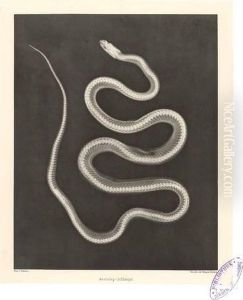Josef Maria Eder Paintings
Josef Maria Eder was an Austrian chemist, photographer, and a pioneer in the field of photography and photographic chemistry. He was born on March 16, 1855, in Krems an der Donau, Austria. Eder is best known for his work in improving photographic techniques and materials during the late 19th and early 20th centuries.
Eder's interest in photography began at a young age, and he pursued studies in chemistry, which was essential for understanding and advancing photographic processes. He continued his education at the Technische Hochschule in Vienna and later at the University of Strasbourg, where he earned his doctorate.
Throughout his career, Eder made significant contributions to the science of photography. He was involved in the development of more sensitive photographic emulsions and was a key figure in the transition from collodion wet plates to more practical dry plates. His research also extended to the areas of photochemistry, photogravure, and spectrum analysis.
In 1888, Eder became a professor at the Graphic Teaching and Research Institute (Graphische Lehr- und Versuchsanstalt) in Vienna, where he founded a photographic research laboratory. He authored numerous publications, including the comprehensive 'Handbuch der Photographie' (Handbook of Photography), which became a seminal text for photographic scientists and practitioners.
Eder's work was recognized with many honors during his lifetime. He was appointed to the Austrian Herrenhaus (House of Lords) and became the director of the State Graphic Institute in Vienna. Despite the technical and scientific nature of his work, Eder was also interested in the artistic aspects of photography and contributed to bridging the gap between photography as an art form and as a scientific discipline.
Josef Maria Eder passed away on October 18, 1944, in Kitzbühel, Austria. His legacy is marked by his profound influence on the technical development of photography and his role as an educator and author in the field. Eder's work laid the groundwork for modern photographic techniques and materials, and his teachings continue to be of historical importance to both the scientific and artistic communities within photography.
